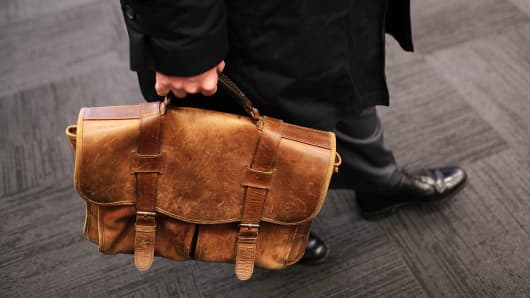If you're thinking a drop in the jobless rate is reason to celebrate, bad news: You might want to keep that bottle of bubbly corked.
The unemployment rate dipped to 7.6 percent in March, from 7.7 percent a month earlier, the Bureau of Labor Statistics reported Friday. But the drop came as nearly 500,000 Americans left the labor force, meaning they stopped working or looking for work and were no longer counted in the official employment numbers.
"Normally we'd love to see a decline in the unemployment rate. Unfortunately, this was largely due to a lot of people dropping out of the labor force," said Joel Naroff, chief economist with Naroff Economic Advisors.
The economy added a paltry 88,000 jobs in March, according to a separate tally included in the jobs report. That's about half the number that many experts had been expecting.
"It's not a promising picture. You want to see the unemployment rate go down because people are getting jobs," said Dean Baker, co-director of the Center for Economic and Policy Research.
The disappointing jobs growth in March came after several more promising months. The economy added 268,000 jobs in February, after gaining 148,000 jobs in January.
Economists would like to be seeing 200,000 to 400,000 jobs added in a given month to feel like the job market is truly entering a period of strong recovery. But employers have been very slow to add jobs, and millions of Americans have found it incredibly difficult to get work.
More from NBC News:
Your job prospects depend on where you're looking
Stock market bull is feeding on corporate profits
Hiring speeding up? Not so fast, businesses say
Naroff cautioned that the monthly reports on jobs growth can be volatile, so it would be a mistake to read too much into one month's data. Still, he noted that it would be much better to see better, more consistent numbers each month.
"Unfortunately, the trends are not in the right direction. We're not seeing a strong growth in the labor market," he said.
The labor force participation rate, a measure of how many Americans are either working or looking for work, fell to 63.3 percent in March. That's down from 63.5 percent in February and a sharp drop from 66.1 percent five years ago.
Baker noted that the drop in labor force participation in March came as many states have started cutting back the number of weeks of unemployment benefits that are being paid out. He suspects that some people might have been looking for work while there were still unemployment benefits available to them, but then dropped out when they had maxed out on their benefits but still hadn't found a job.
"This all fits with the story of people just kind of throwing in the towel," Baker said.
That's not surprising given how difficult it has been to find a job. The nation was officially in recession from December of 2007 to January of 2009, but the recovery in the nearly four years since has been slow and spotty.
Employers have been particularly stingy about adding jobs. The March employment report showed that 51,000 jobs were added in professional and business services, and there also was some growth in areas including construction and health care.
But retail employment fell by 24,000, and the postal service also cut about 12,000 jobs.


